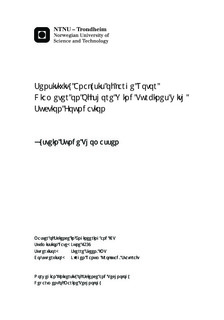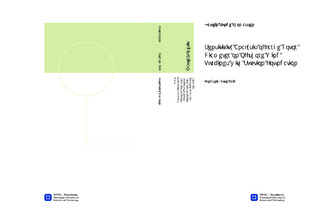| dc.contributor.advisor | Steen, Sverre | nb_NO |
| dc.contributor.advisor | Krokstad, Jørgen Ranum | nb_NO |
| dc.contributor.author | Thomassen, Øystein Sunde | nb_NO |
| dc.date.accessioned | 2014-12-19T12:12:34Z | |
| dc.date.available | 2014-12-19T12:12:34Z | |
| dc.date.created | 2014-09-11 | nb_NO |
| dc.date.issued | 2014 | nb_NO |
| dc.identifier | 746113 | nb_NO |
| dc.identifier | ntnudaim:11191 | nb_NO |
| dc.identifier.uri | http://hdl.handle.net/11250/239068 | |
| dc.description.abstract | This thesis has an objective aimed at understanding the sensitivity of the support structure for an offshore wind turbine with bucket foundation as the turbines get larger. The focus has been on the response and forces on turbine blades in turbulent wind and how these responses propagates to the foundation of the structure. Special attention is given to the second global bending modes of the support structure. The response in the connection between the bucket and transition piece is simulated for several load cases of wind and waves. The simulations are for wind speeds in operational mode and not extreme wind where the turbine is shut down. The response and forces in the bucket are important to understand. Especially for being able to assess the fatigue life of the structure. Waves and wind have a wide range of frequencies, but the energy is mostly in the lower frequencies below the first natural frequency of the structure. The turbine blades will on the other hand have peaks in force and response in the rotational frequency of the rotor and its higher harmonic frequencies when calculated in a rotational sampling. They may propagate to the foundation and contribute to response around the second global bending mode of the structure. To investigate the response in the bucket, simulations were performed in Fedem Windpower. Fedem windpower provides a powerful simulation tool for dynamic analysis of complete wind turbine systems. Three-dimensional wind field were created in TURBSIM. Wind field based on IEC Kaimal spectrum with a turbulence intensity of 18\% were created. Fully integrated coupled simulations with wind and waves where performed. AeroDyn is used for reading the wind files and calculate the forces on the turbine blades. Fedem Windpower uses the loads calculated by AeroDyn as input to its dynamic solver. Waves calculated from the JONSWAP spectrum was used in the simulations. The results indicates that there will be response in the foundation due to waves and wind. Both wave and wind will contribute to response around the first natural frequency of the structure. Waves in form of wave excitation around the natural frequency of the structure and wind in form of the rotating blades. The effect of rotating blades will also create response around the second natural frequency of the structure. This means that both waves and wind have to be carefully considered when assessing fatigue damage to the structure. | nb_NO |
| dc.language | eng | nb_NO |
| dc.publisher | Institutt for marin teknikk | nb_NO |
| dc.title | Sensitivity Analysis of large Rotor Diameter on Offshore Wind Turbines with Suction Foundation | nb_NO |
| dc.type | Master thesis | nb_NO |
| dc.source.pagenumber | 91 | nb_NO |
| dc.contributor.department | Norges teknisk-naturvitenskapelige universitet, Fakultet for ingeniørvitenskap og teknologi, Institutt for marin teknikk | nb_NO |

